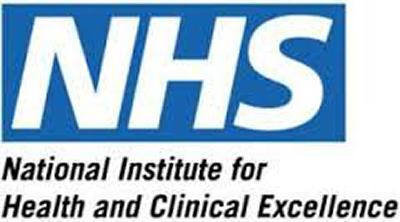NICE outlines draft guidance for safe nurse staffing in A&E

The National Institute for Health and Care Excellence (NICE) today issued a draft guideline to advise NHS Accident & Emergency departments on how to ensure there are safe levels of nursing staff.
The number of people attending A&E departments has increased steadily since 2002/03. The guidance will help hospitals to plan safe staffing for nursing and best meet demand for their A&E services.
To inform their guidance NICE commissioned a team from the University of Southampton, led by Professor Jonathan Drennan, to review existing research evidence.
Building on its internationally recognised expertise in nursing workforce research, the Southampton team undertook a series of systematic reviews of research exploring the effects of nurse staffing on a range of patient outcomes.
“Getting NICE to come up with guidance on safe staffing is an important part of the Government’s response to the Francis Enquiries into failings at Mid-Staffordshire Hospital and other reports of staffing related care failures in NHS hospitals,” said Professor Peter Griffiths, chair of health services research at the University’s Centre for Innovation and Leadership in Health Sciences, and chair of Southampton’s Work Futures Research Centre chair. “We are very pleased that our research in this area has put us in a position to support NICE in this work by undertaking evidence reviews.”
The guideline issued today by NICE was commissioned by the Department of Health and NHS England in November 2013 and is part of a series of guidelines which NICE will develop on safe staffing in the NHS.
The new draft recommendations set out the responsibilities of senior nurses and hospital managers, and the actions organisations can take, to ensure there are enough registered nurses and non-registered nursing staff to provide safe care at all times to patients attending A&E. This includes making sure that the department has the capacity to provide all necessary emergency care, as well as specialist input for children, older people or those with mental health needs.
The draft guideline includes recommendations for minimum ratios which can be considered by organisations when planning what nursing staff they need to fund in advance (also known as the establishment) or they can also be used on a shift-by-shift basis to help work out what services can be made available at that time. These are based on the seriousness of a person’s condition and the level of care they need, for example:
- 2 registered nurses to 1 patient in cases of major trauma or cardiac arrest
- 1 registered nurse to 4 cubicles in either ‘majors’ or ‘minors’
Demand in A&E can change rapidly and the draft guideline recommends that when planning the number of nurses for the establishment, departments should allow for enough nursing staff to care for higher than the average number of patients who attend the department on a daily basis. By increasing weekly nursing staff hours to cover above average attendance numbers, staff can deal with unexpected peaks in the demand for A&E services and be moved around the department flexibly to respond to changing situations.
The draft recommendations also cover the process for senior nurses on each shift to check whether there are enough nursing staff at that time. Throughout the shift, nurses are also advised to look out for red flags that may show something is wrong, such as patients falling or leaving the department without being seen, or the department being crowded. These should be reported immediately to the nurse in charge who can take action to stop the situation getting worse. Organisations should also publicise red flags to patients, family members or carers, and ensure they are able to report incidents such as untreated pain or delays receiving food and drink, to the nurse in charge.
Professor Mark Baker, director of clinical practice at NICE said: “From being involved in a major trauma such as a car accident to the sudden worsening of a chronic condition like heart failure, medical emergencies can affect anyone at any time. Over 14 million people attended A&E departments1 in England last year. Nursing staff are often among the first to see patients and we know the care they provide is essential for successful treatment of every patient. Ensuring there are enough available nursing staff, with the right skills, helps to make sure people in need of immediate medical help, will get safe care, whatever the time of day or night.”
The draft version of this guideline has been published for consultation. NICE encourages comments from stakeholders with an interest in this guideline. Organisations can register as a stakeholder on the NICE website and have until Thursday 12 February 2015 to submit their comments. Individuals are ideally advised to pass comments through a registered stakeholder organisation that most closely represents them but are also welcome to submit comments directly via the NICE website.
Further details on all the safe staffing guidelines are available on the NICE website.